Table of Contents

Rio de Janeiro might not be the capital city of Brazil, but it’s probably the most famous city in the country and the one that travelers seek the most.
To visit Rio de Janeiro it’s quite easy. In addition to a legendary Carnaval, the must-see places are worldwide famous:
- The Pão de Açúcar hill and its cable cars, the Cristo Redentor (Christ the Redeemer) statue with its open arms atop the Corcovado hill, looking over the city beaches like Copacabana and Ipanema.
Soccer is Brazil’s king sport and Rio de Janeiro is the city that houses Estádio do Maracanã, the stadium where four of the best national teams play: Flamengo, Fluminense, Botafogo, and Vasco da Gama.
The Rio de Janeiro favelas (slums) are also famous, almost always for the wrong reasons, although recently they’ve become a tourist attraction.
On this page, I share with you a practical city guide with the best places to visit in Rio de Janeiro.
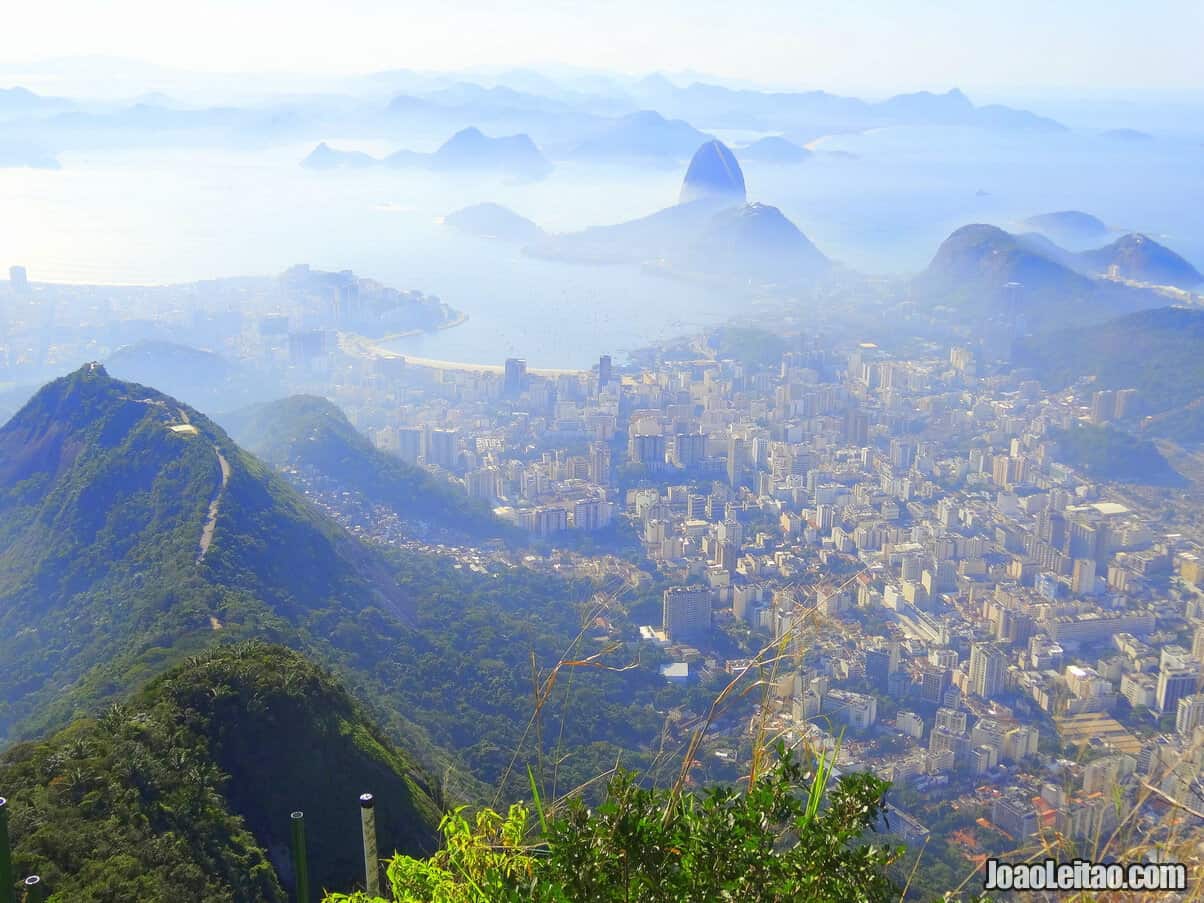
Music is also one of the city’s calling cards. Samba is stronger here than anywhere else in Brazil and some of the legendary songs of Brazilian music are connected to Rio de Janeiro like “Menino do Rio” or “Garota de Ipanema.” For those who like to explore the historical parts of the city, you have to visit the center, the heart of the city with the oldest churches, the main monuments, and beautiful office buildings.
Top things to do in Rio de Janeiro
What to visit in Rio de Janeiro.
- Christ the Redeemer
- Sugarloaf Mountain (Pão de Açúcar)
- Copacabana beach
- Ipanema beach
- Santa Teresa
- Lage Park
- Staircase of Selarón
- Royal Portuguese Cabinet of Reading
- Church of Our Lady of Candelaria
- National museum
- National Historical Museum
- National Museum of Fine Arts
- Museum of Modern Art of Rio
- Ilha Fiscal
- Cable Car of Alemão
- São Bento Monastery
- Leblon
- Botanical Garden
- Imperial Palace
- Botafogo
- Sambódromo
- Arpoador
- Pedra da Gávea
- Cathedral of São Sebastião
- Theatro Municipal of Rio de Janeiro
- Tijuca National Park
- Fort Duke of Caxias
Walking in Ipanema Beach
Quick travel tips to visit Rio de Janeiro
- Wake up early and be the first to enter monuments, museums or other places of interest.
- Climb to Cristo Redentor – the best view of the city.
- Take a free walking tour.
- Go watch a football game at the Maracanã stadium.
- Be careful about your belongings.
- Walk the Ipanema beach and enjoy the sunset on the Stone of Arpoador.
Best places to visit in Rio de Janeiro
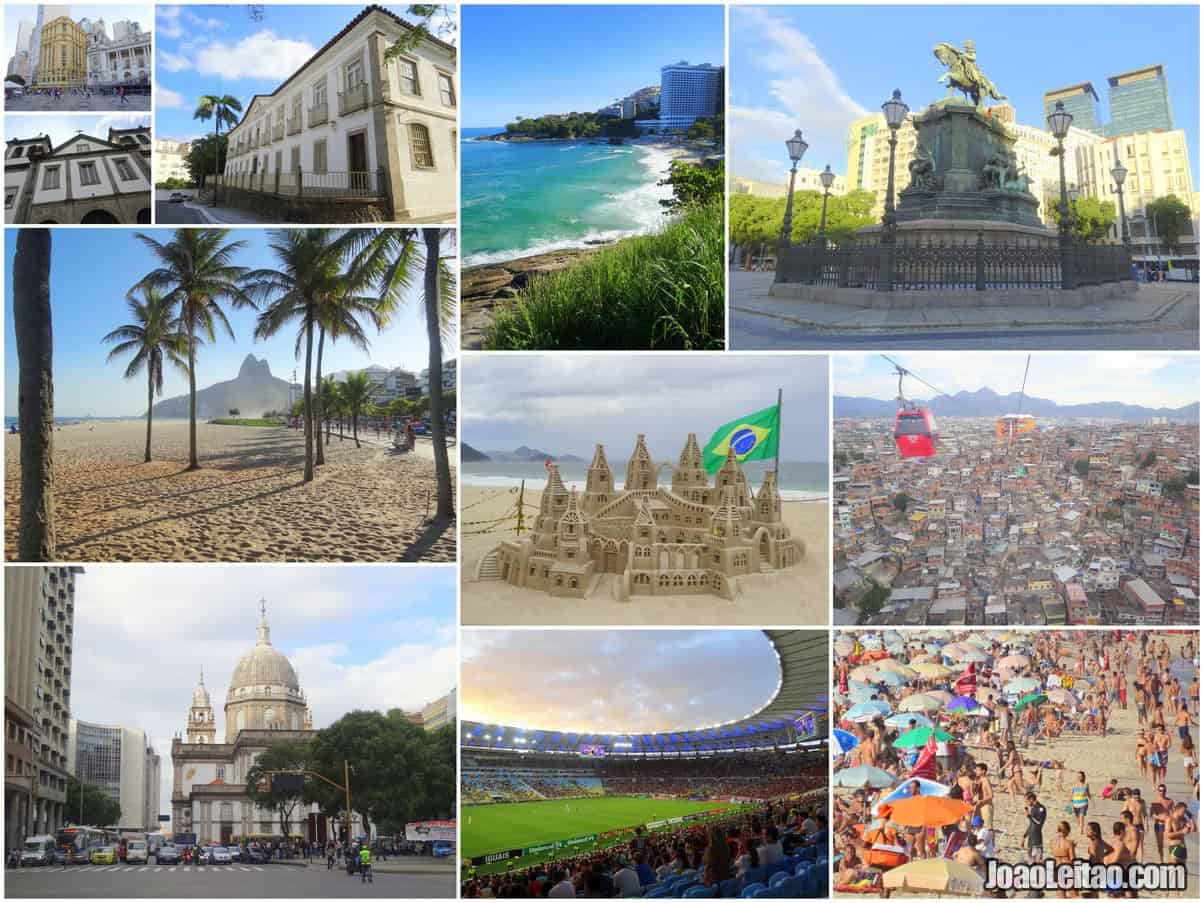
If you want to know what to see in Rio de Janeiro, I organized a list of places to visit so that you can plan your trip and maximize your time during your holidays.
Top 12 places to visit in Rio de Janeiro.
1. Cristo Redentor (Christ the Redeemer)
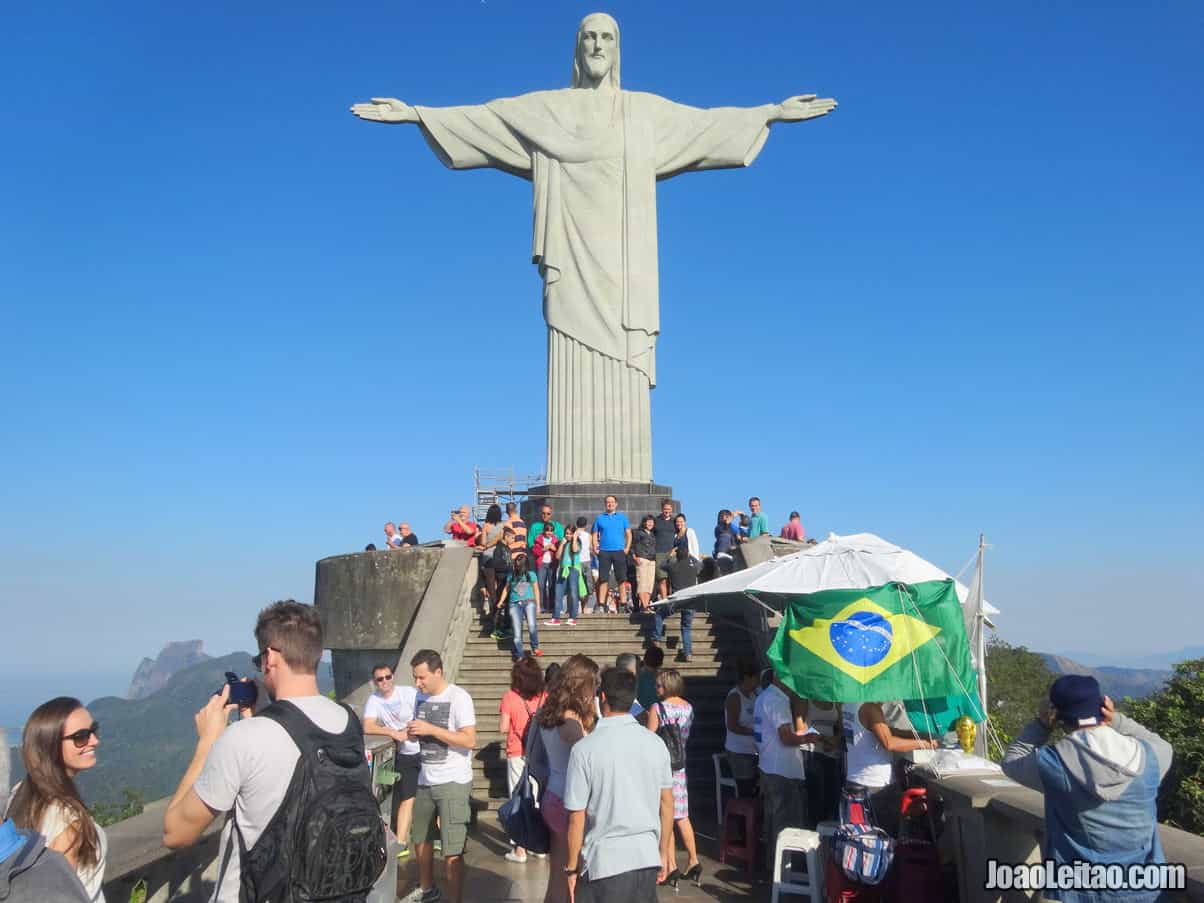
Maybe the most famous site in Rio de Janeiro, this statue of Jesus Christ with open arms that appears to look over the whole city was built at the top of the Corcovado hill between 1922 and 1931. Paul Landowski was the French designer behind the Art Deco statue and Heitor da Silva Costa was the engineer supervising the works.
The statue is 38 meters high and from its base, you have one of the best views of Rio de Janeiro. The first project to build the Christ dates from the mid-19th century but the idea was set aside when the Republic was established in 1889. It was still made decades later, thanks to private donations. The most popular way to reach Cristo Redentor is on the red train that reaches the top in 20 minutes.
2. Pão de Açúcar
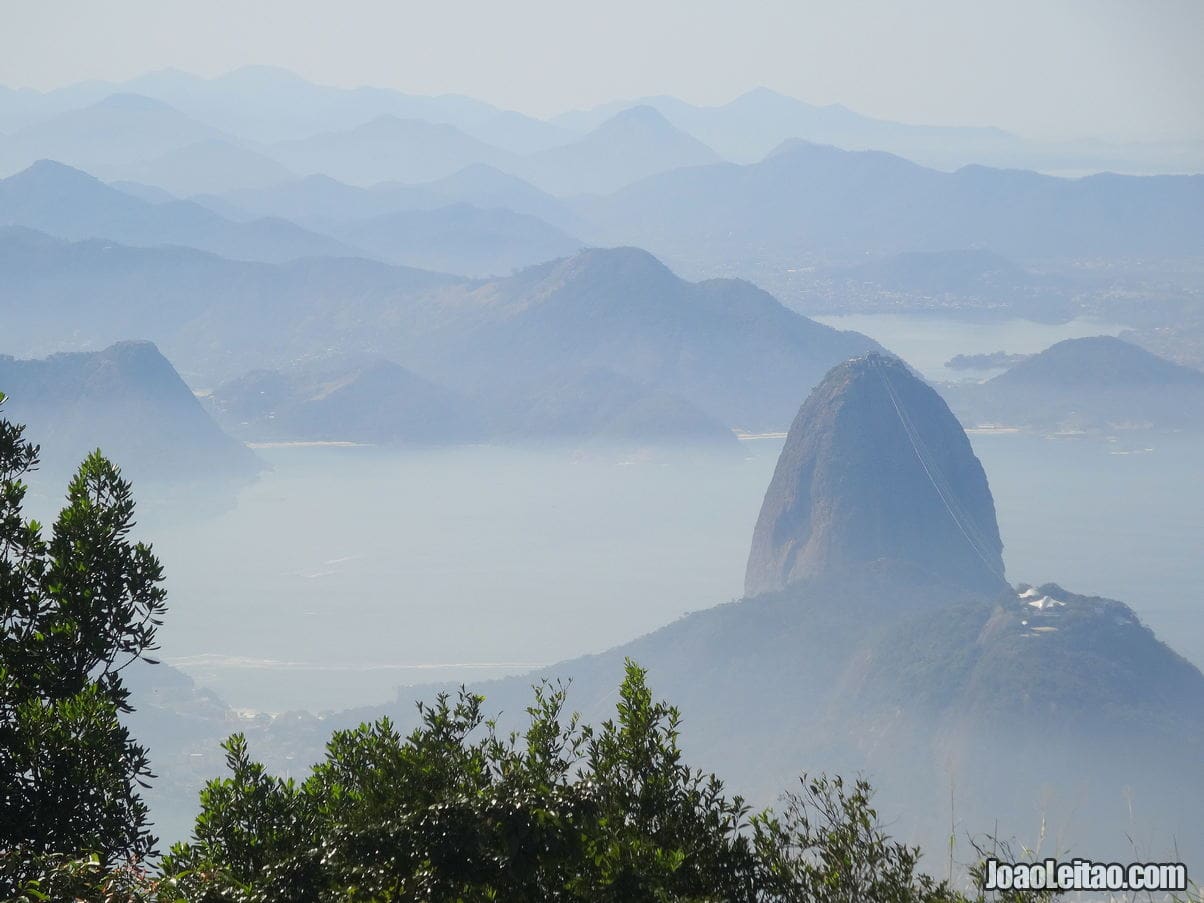
The Pão de Açúcar hill is 396 meters above sea level and you can reach the top in one of two cable cars: the first one takes you to Morro da Urca (220 meters). From there you can see the Guanabara Bay and the almost infinite coastline. You can relax for a while in one of the many bars and restaurants in the area before the final trip to Pão de Açúcar.
If you plan to take time to explore it’s best to travel early in the morning. Be there by 8:00 am to avoid the long lines of people waiting for the cable car. If you don’t want to wait in line, you can hike up to Morro da Urca in about one hour and a half. It’s a steep hike for about half an hour.
3. Royal Portuguese Cabinet of Reading
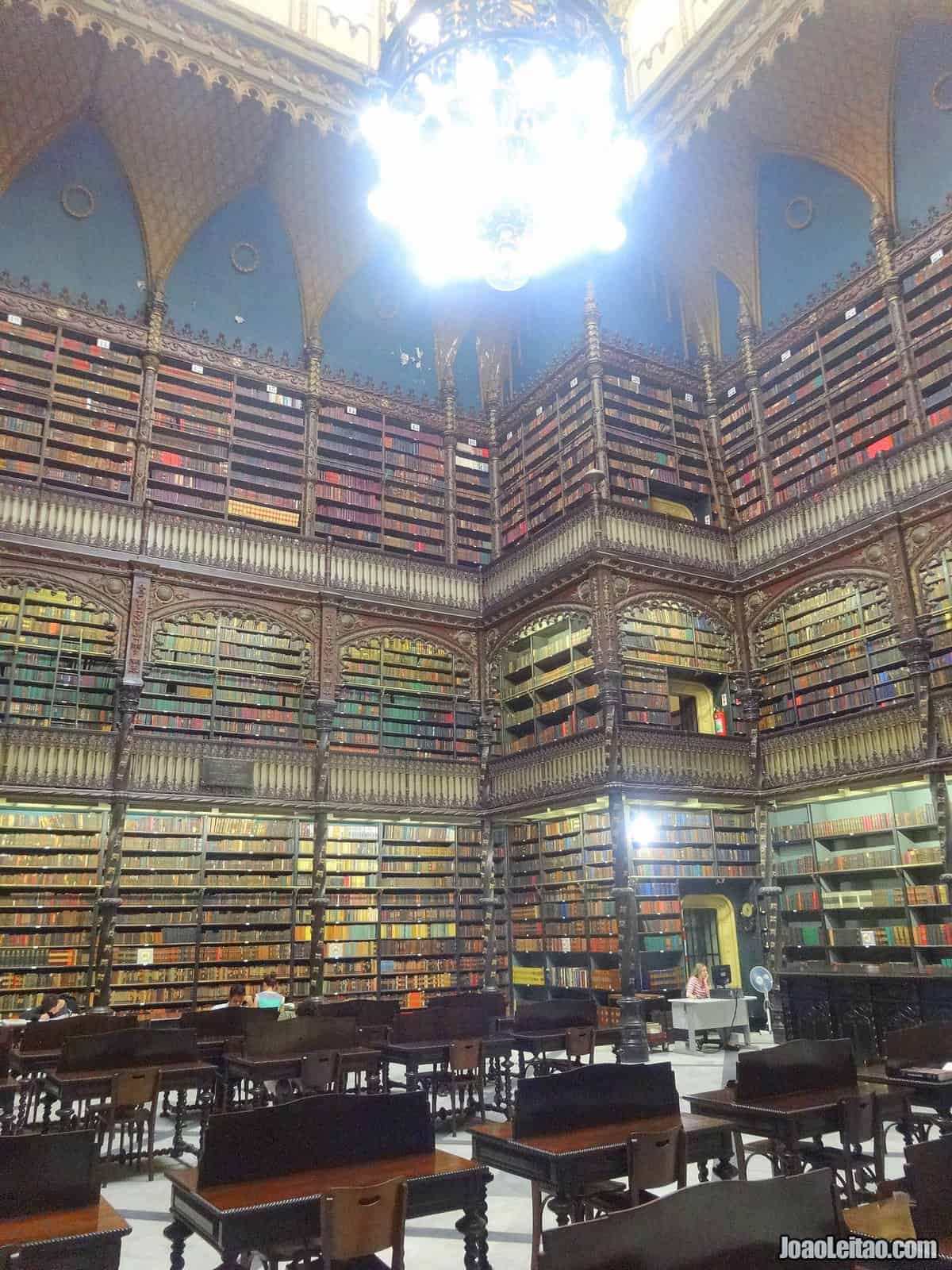
The Royal Portuguese Cabinet of Reading is located in Luís de Camões Street, in the center of the city of Rio de Janeiro. This place is worldwide recognized as one of the most beautiful libraries in the world.
4. Copacabana Beach
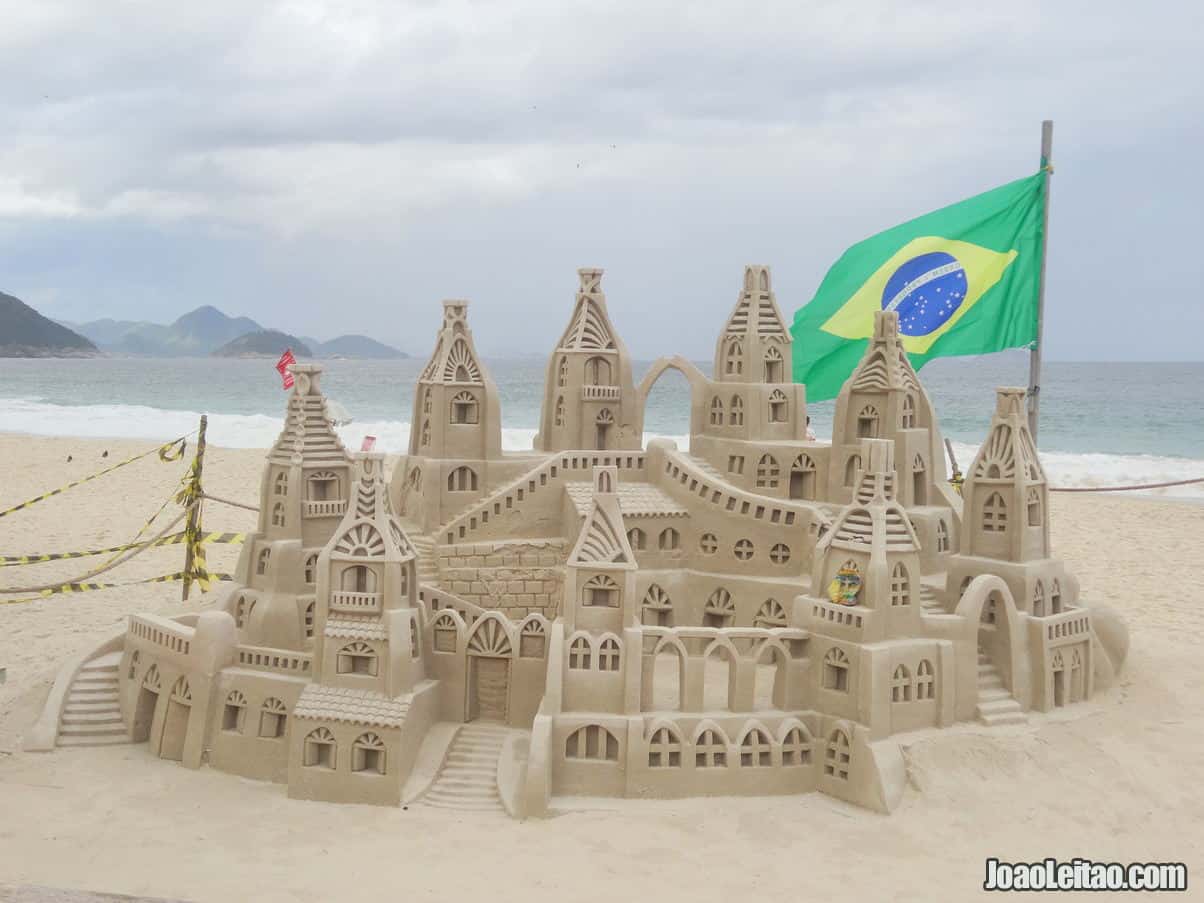
5. Escadaria Selarón (Selaron Staircase)
The story of the Selaron staircase begins in 1990 when Chilean Jorge Selarón, who lived in Rio, began to restore a neglected staircase in front of his house. Little by little he covered the stairs with different decorative elements like tiles, mosaics, and mirrors, always using the colors of the Brazilian flag: blue, green, and yellow. He had to sell some of his works to fund the staircase project but eventually, he finished it. Of the 2,000 mosaics used in the staircase, 300 were hand painted by the artist, who called his piece a tribute to the Brazilian people. Nowadays the place is one of Rio de Janeiro’s tourist attractions, located between the neighborhoods of Santa Teresa and Lapa.
This is the main beach in Rio de Janeiro and one of the most famous beaches in the world. It’s close to the also renowned boardwalk in Calçada Portuguesa (the typical black and white pattern you find in Portuguese squares and sidewalks) that’s 4 km long. Two historical forts side the beach, Copacabana (1914) and Duque de Caxias (1779). The beach is the most popular place to celebrate New Year’s in Rio de Janeiro and it’s usually the chosen venue for the FIFA Beach Soccer World Cup. Sports activities are frequent in Copacabana, with swimming and beach volleyball competitions. There are plenty of bars at the beach where you can have a beer or coconut water. The beach is also known for its sand sculpture competitions. Copacabana is also the name of the adjacent neighborhood, one of the most cosmopolitan ones in the city.
6. Theatro Municipal of Rio de Janeiro
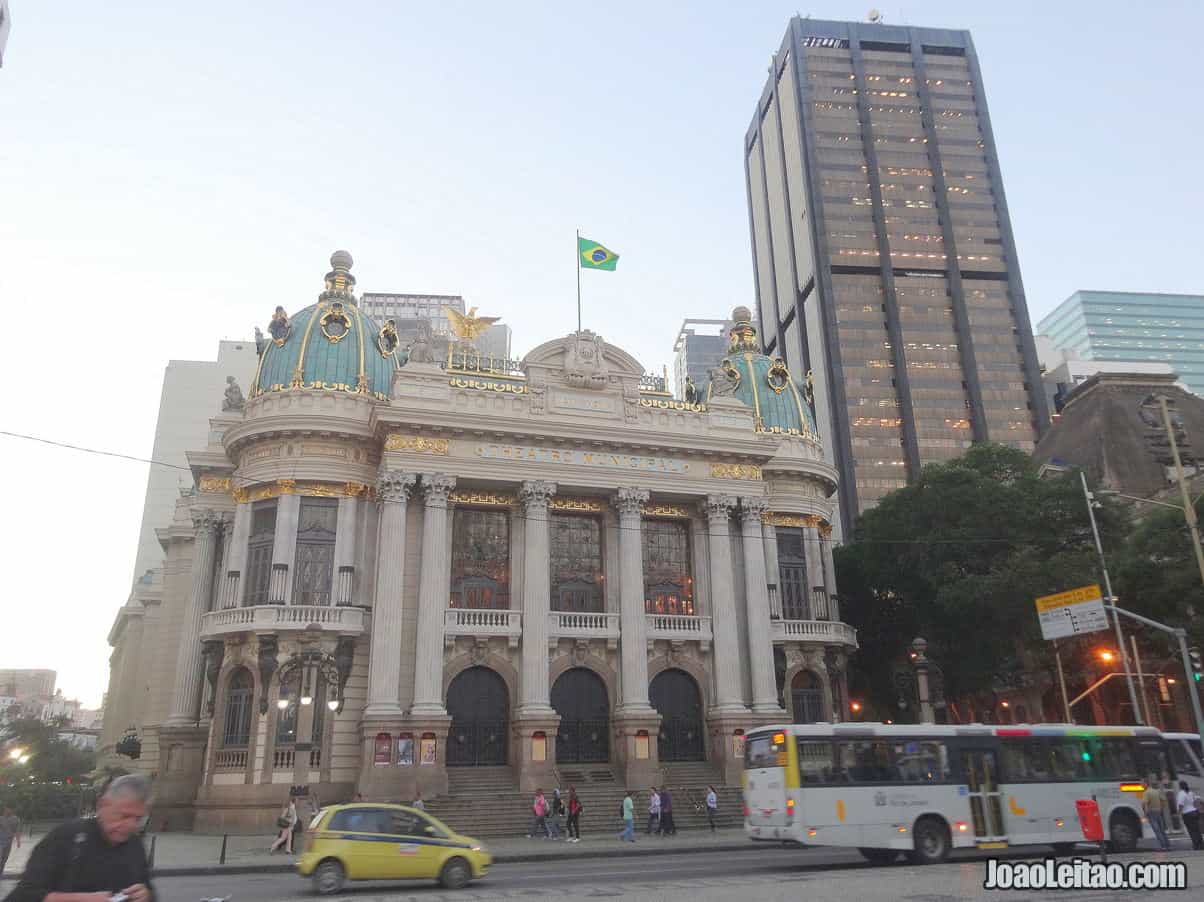
The Municipal Theatre of Rio de Janeiro is an opera house in the center of the city. The building was inspired by the Paris Opéra and was inaugurated in the 14th of July, 1909.
7. Ipanema Beach
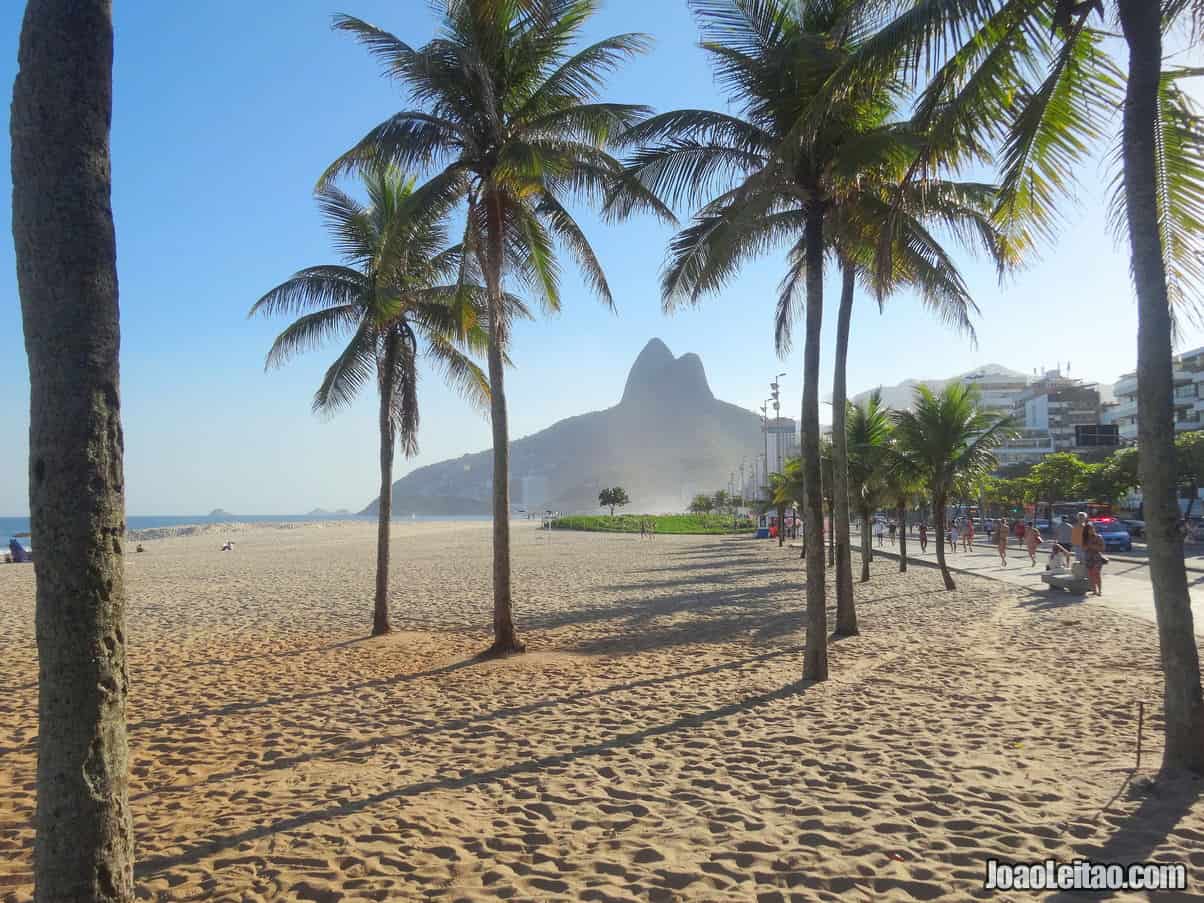
It’s the second most popular beach in Rio de Janeiro, after Copacabana. It stretches for 2.6 km, between Arpoador and Jardim de Alah, close to the neighborhoods of Ipanema and Leblon. It became even more famous after the success of Tom Jobin’s song “Garota de Ipanema” (“The Girl from Ipanema”). The beach is a common venue for sports events and music concerts. Posto 9 is a well-known meeting point for young people and artists, and even some celebrities in Rio de Janeiro. One of the exciting things about this beach is that people who come here often clap to the sunset, a habit started by journalist Carlos Leonam.
8. Botafogo
This is one of the most famous neighborhoods in Rio de Janeiro. Mostly middle-class people live here, and the neighborhood has great views of Guanabara Bay and the Pão de Açúcar hill, especially from Mirante do Pasmado, a viewpoint you can only reach by car. The cultural scene is particularly intense in this neighborhood, with many cinemas, museums, and theaters. This is where you’ll find Palácio da Cidade, what we would call the City Hall. The beach here is not good for swimming but it’s good enough for a stroll and has a nice bike path. Evenings are always lively and the “boteco” culture (small bars, cafes, or taverns) is alive and well in Botafogo.
9. Sambódromo (Sambadrome)
The Sambódromo (Sambadrome) is the epicenter of the famous Carnaval of Rio de Janeiro. This is the place where all samba schools parade, competing for the coveted titles. It was built in the 1980s and designed by Oscar Niemeyer, perhaps the best Brazilian architect of all times. Thanks to the use of modular concrete blocks, the work was completed in just four months. The parade area is 13 meters wide and 700 meters long, and the benches around it sit 78,500 people. Outside the Carnaval season, the space is used as an events venue and you can visit it for free during the day, as well as the Samba Museum. It’s located in the so-called Cidade Nova (New City).
10. Leblon
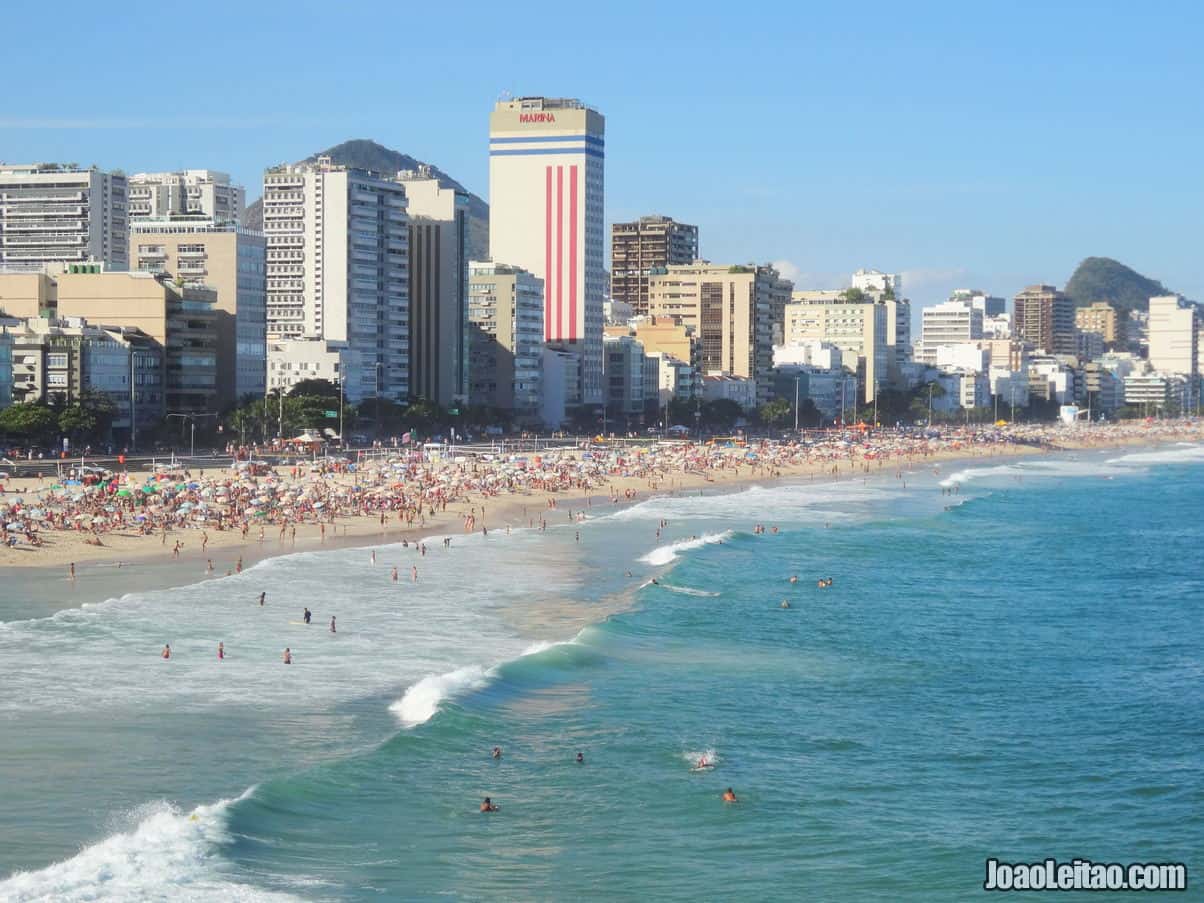
This neighborhood of Rio de Janeiro is in the south area, neighboring Ipanema. Middle-class and high-class people live there and it’s developed from the end of the 19th century where there was nothing but sand. It’s named after Charles Leblon, a French man who owned one of the farms that used to be where the neighborhood is now. Nowadays is one of the most expensive neighborhoods in Rio de Janeiro, with a very cosmopolitan vibe and lots of bars and restaurants, most of them open 24/7. It has its own beach, less crowded than Copacabana and Ipanema, maybe because you can’t reach Leblon via subway. It’s connected to Ipanema by a beautiful boardwalk and it’s one of the safest areas in Rio.
11. Paço Imperial (Imperial Palace)
The Imperial Palace was built in 1738 by architect José Fernandes Pinto Alpoim. It’s also known as the Royal Palace of Rio de Janeiro and Palace of the Viceroys, and it was once the residence of King Joao VI of Portugal, later the emperor of Brazil. His successors used the building as their workplace. With the establishment of the Republic of Brazil (1889), the Imperial Palace lost its meaning and was transformed into the city’s main post office. Most of the interior décor was lost and the façade has been changed over the years. It was renovated in 1980 and restored into what it looked like in 1818, based on a vast collection of engravings and old paintings depicting the palace. It’s been used as a cultural center since 1984, with exhibition rooms and the Paulo Santos library that specializes in arts and engineering.
12. Museu Nacional (National Museum)
The National Museum in Rio de Janeiro is the oldest scientific institution in Brazil and one of the most important natural history museums in the American continent. Although it was founded in 1818, it didn’t come to the current building, the São Cristóvão Palace, until 1892. This was the official residence of Brazil’s imperial family until the Republic was established in 1889. In addition to the assets dedicated to natural history, the museum also houses important archeological collections, mainly from Ancient Egypt and Pre-Colombian America. The museum is managed by Universidade Federal do Rio de Janeiro since 1946. To visit the museum, catch the subway and get off at the São Cristóvão station.


